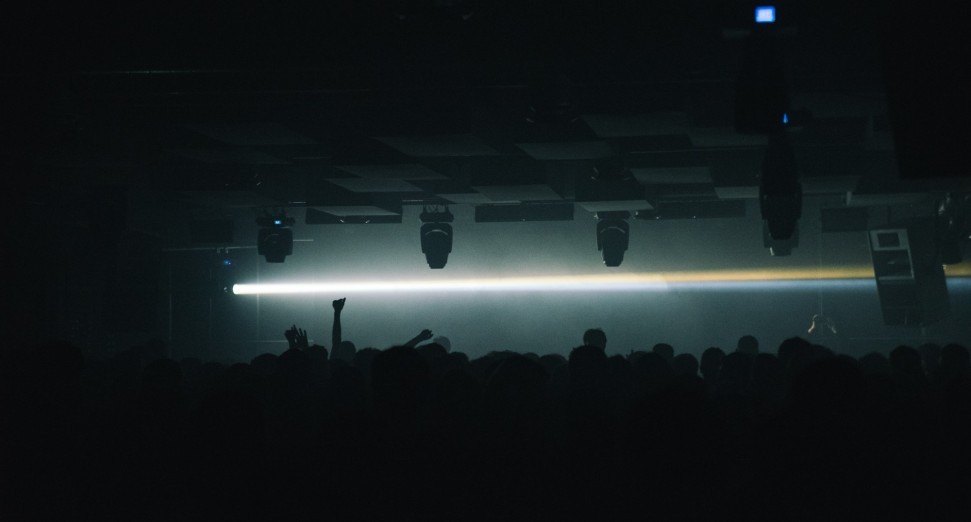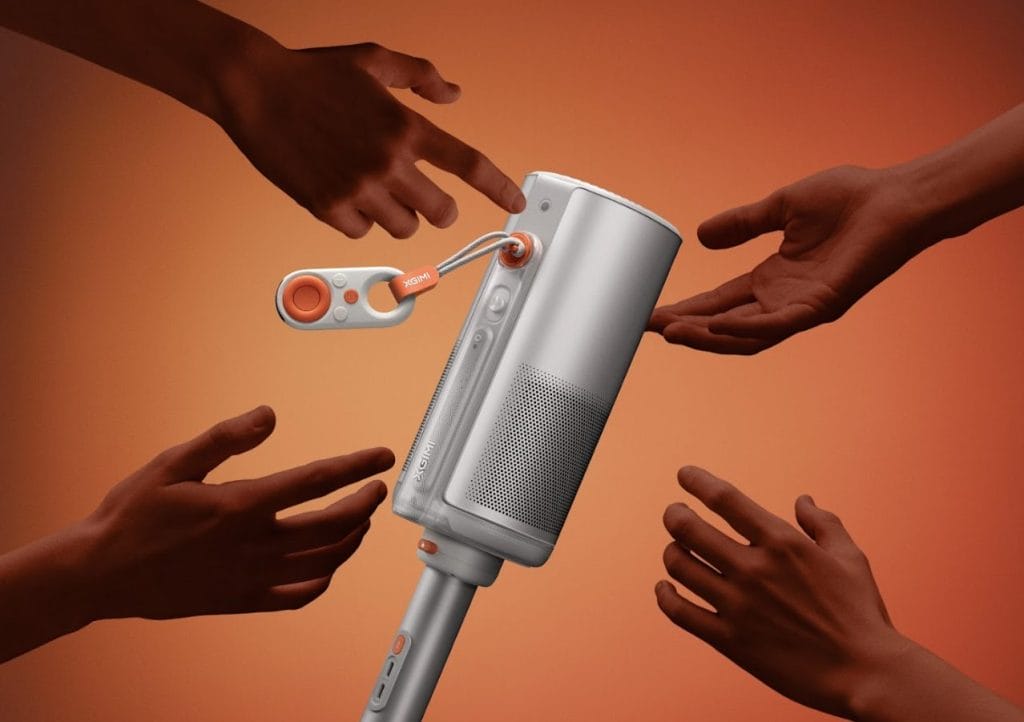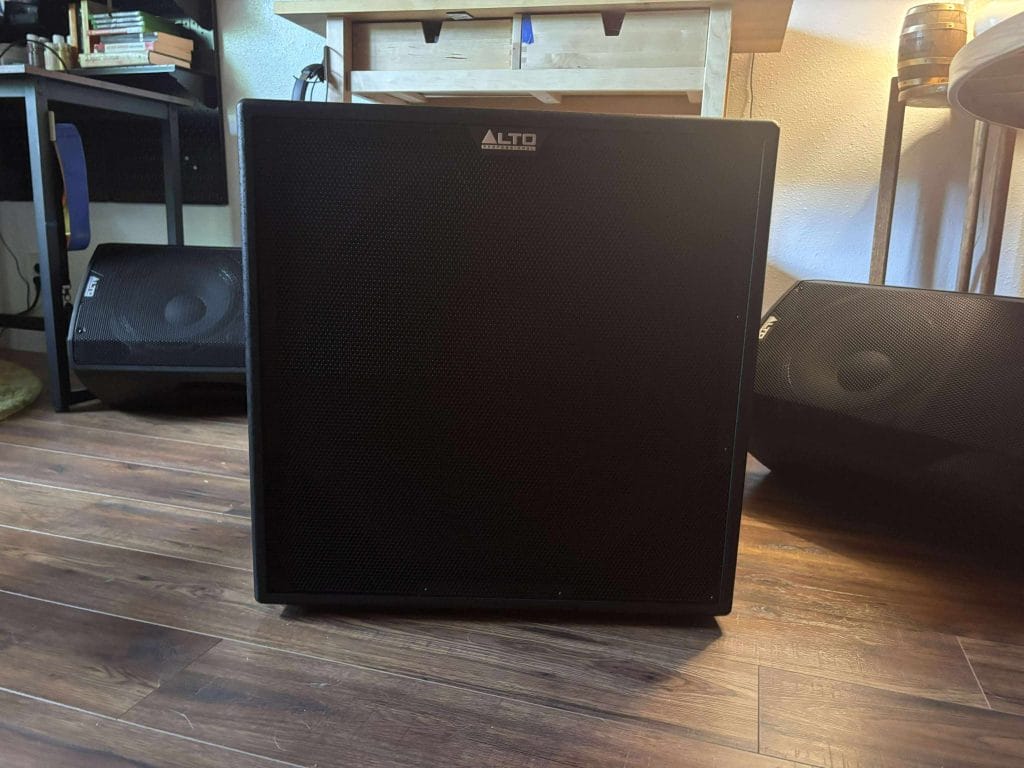
Why I’d Recommend the Alto TX12S to Half the People Who Ask
Table of Contents
The Alto TX12S recently dropped and, unlike many of the products hitting the market these days, it isn’t trying, or even claiming, to reinvent the wheel and change your life. It’s trying to solve a very specific problem for a very specific user: how do you get clean, consistent low-end in a rehearsal room, gig setup, or small business installation – without paying premium pricing or dealing with confusing setup workflows?
That’s what this powered subwoofer is built to handle and through which lense we’ll be mostly discussing in this review. And for the most part, it delivers.
So let’s dive into it and leave no stone unturned!
First Impressions and Build Of The Alto TX12S
You can tell right away that the TX12S was designed to be practical; save for maybe its weight but I’ll get to that in a bit.
There’s nothing flashy about the cabinet – it’s made from internally braced MDF, and the textured splatter-finish does a soild job of making wear and tear less noticeable. The front grille is full metal, and the ported layout manages airflow without introducing noise. The two side handles are exactly where you want them, and the 36mm pole socket makes it easy to drop this into a setup without adapters or extra hardware.
Weight-wise, it comes in at just under 50 pounds. That’s light enough for some to move solo if you need to, but heavy enough to give you confidence that it won’t shift around on you once it’s placed. I myself, getting this thing into my house nad studio for this review, had to lug it up a flight up stairs (my studio is on the second story) and it was something I regret trying to take on solo. But if you had a spotter or weren’t lugging it upstairs, I think you’d be fine (especially with a dolly or something).
The benefit here is that nothing about the build feels flimsy. If you’ve used subs in this price range before, you’ll probably notice that this one avoids the usual plastic edges or wobbly panels that tend to show up when companies cut corners.
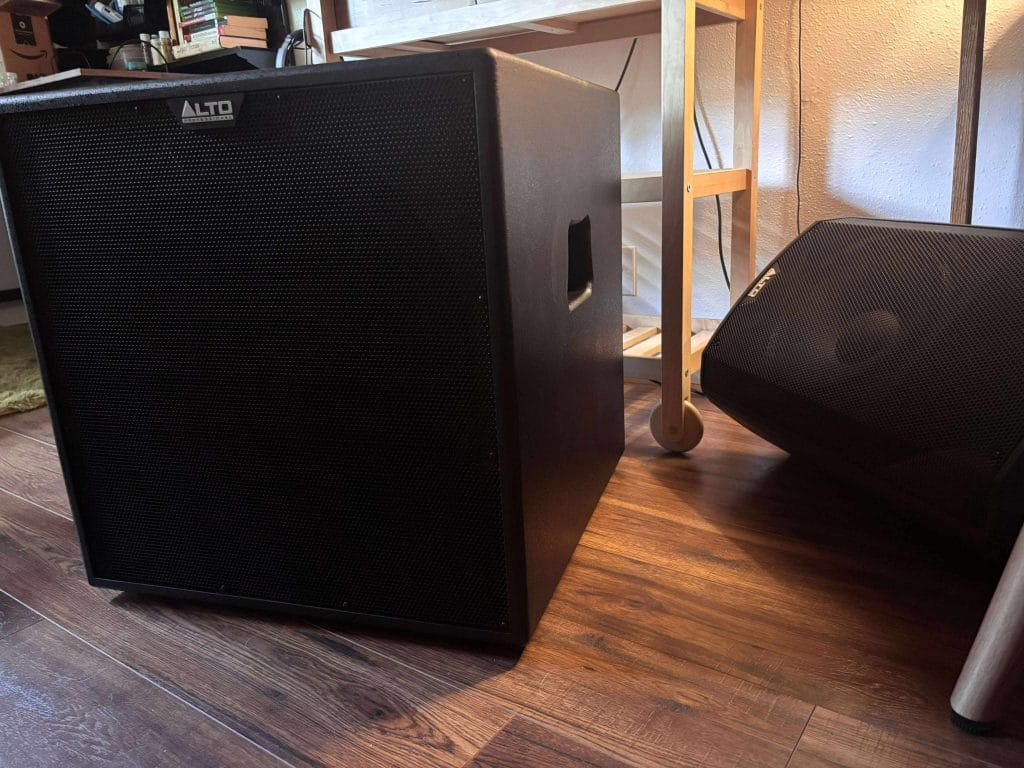
That said, this isn’t some indestructible touring box. If you’re gigging four nights a week and constantly loading in and out of vans, you’ll want to be careful during transport. But for fixed installs, mobile DJ setups, or even home studios where it might be moved once a month at most, the build holds up. The cabinet design feels honest—functional, and clearly intended for use cases where size, weight, and durability all need to balance without overdoing any one part.
Connectivity and Setup
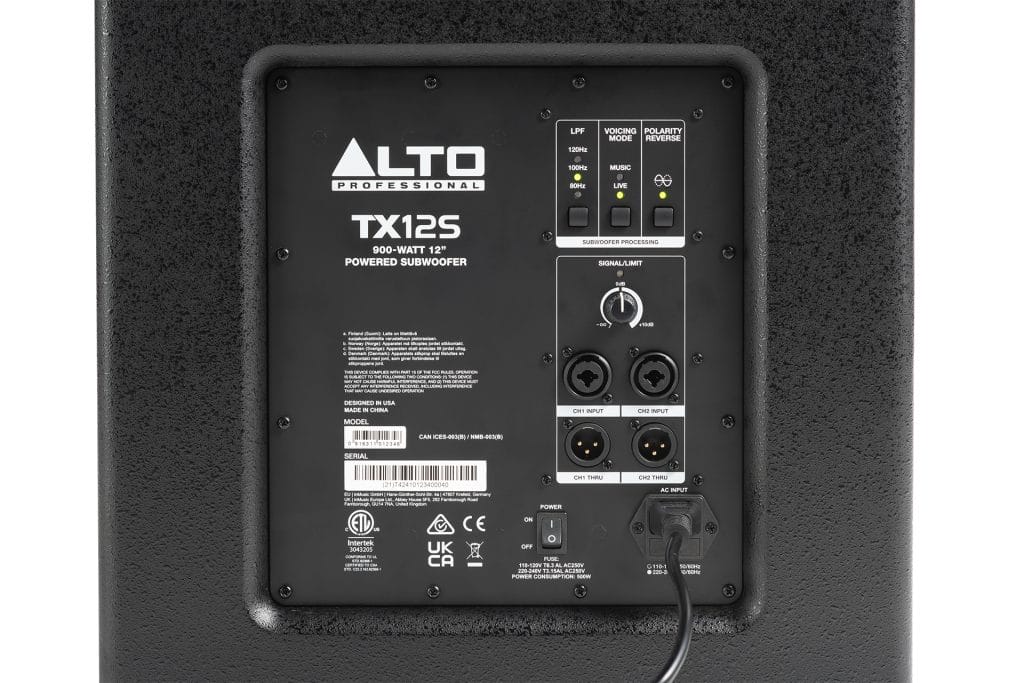
Round the back, the TX12S gives you the essentials without clutter. You get two combo XLR/¼-inch inputs and two balanced XLR outs, so integrating this into your existing setup is straightforward. There’s a polarity reverse switch if you’re running into phasing issues or mixing speaker models, and a low-pass filter toggle that lets you pick between 80Hz, 100Hz, or 120Hz crossover points. There’s also a button to switch between two DSP EQ modes—one labeled for live use, the other for music playback.
That might sound like standard fare, but in use, it’s clear that Alto went for minimal but meaningful options and avoided cluttering the user experience with apps, intensive LED displays, and in-depth configuration options. You’re not stuck scrolling through nested menus or downloading an app to unlock basic functionality. That’s ideal if you’re loading in for a set and need to get things working fast.
The physical switches feel solid, and more importantly, they do what they say they’ll do.
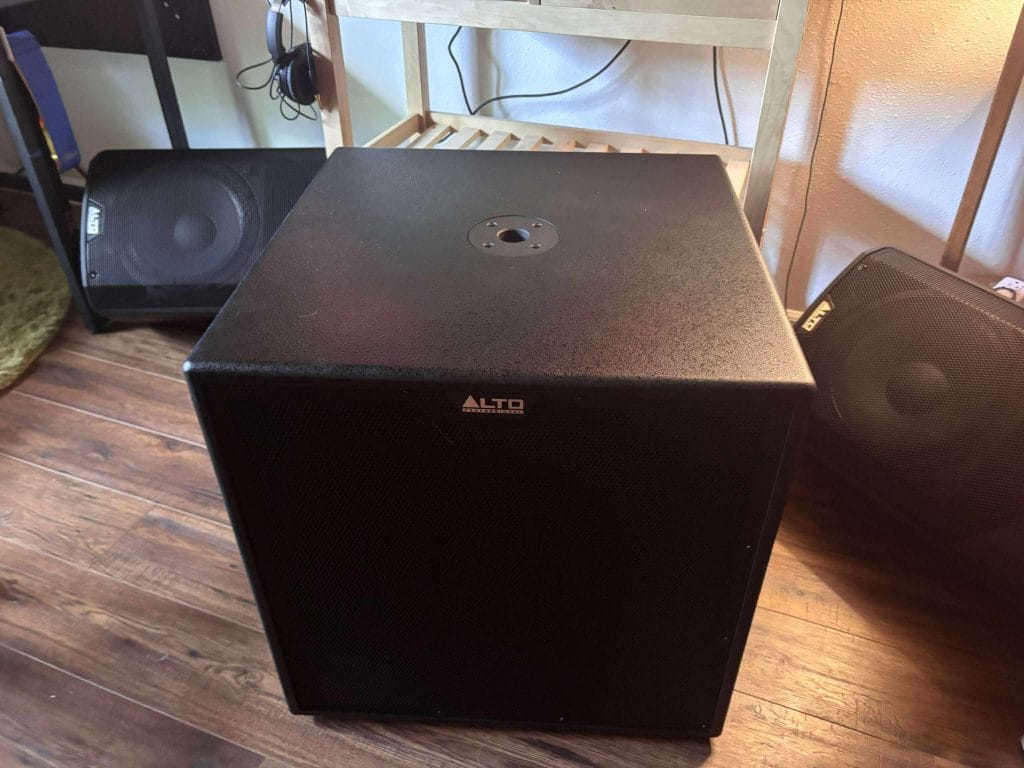
The voicing modes aren’t a gimmick either – they change how the sub behaves depending on what you feed it. If you’re spinning dance tracks in a bar with some acoustic treatment, the Music mode will give you more extension and a slightly warmer feel. If you’re in a gym or live rehearsal space, the Live setting dials in more control so things don’t blur together. It’s not about chasing studio-grade precision, it’s about having usable flexibility in rooms that aren’t always ideal. And for a lot of people, that’s what actually makes the difference.
Real-World Performance
Power output is rated at 900 watts peak, with 450 watts RMS driven by a Class-D amplifier. The 12-inch woofer features a 2-inch voice coil and delivers a reported frequency response of 46Hz to 115Hz (-3dB), with a maximum SPL of 126dB at 1 meter.
In use, it feels like plenty. You’re not going to shake the walls of a warehouse, but that’s not really what this is for. What you get instead is clarity and usable energy in the low end – tight kicks, controlled subs, and a handoff between top and bottom that doesn’t need a ton of fussing. For DJs or live acts playing in smaller rooms, that can be the difference between a set that sounds glued together and one that doesn’t. And because the internal DSP is actually doing some real work—especially around overload protection – it doesn’t fall apart when you push it.
As for the voicings, they do make a difference, but they won’t rewire the character of your entire rig. The Music mode adds some weight and softens the edges, which works better in rooms with decent treatment or more linear top speakers. The Live mode feels a bit more aggressive – it shortens the tail on low-end hits and makes everything feel a bit snappier, which can help if you’re dealing with reflections or bleed from nearby mics. The nuance here is worth noting: it wontmake bad systems sound good. It’s about shaving off setup time and giving you a head start toward something workable. If you’re already familiar with how your space reacts to low end, these switches are just enough to help you dial it in faster.
How It Integrates Into a Setup
One of the strongest advantages of the TX12S is how easily it drops into an existing setup. The built-in low-pass filters give you flexibility to pair it with different PA speakers without requiring external crossovers or processors. Whether you’re pairing it with Alto’s own TX4 series or another brand’s tops, the controls let you dial in your crossover points quickly.
You also get a polarity reverse switch, which is helpful when managing phase alignment in less-than-ideal room conditions. The sub isn’t trying to reinvent the signal chain – it’s focused on making it easy to get solid performance in real-world scenarios.
In my own testing, I ran it in a small studio, a rehearsal space, and a makeshift DJ rig for an event in a café. The flexibility paid off in each case. In the studio, it added clarity to sub-heavy tracks without muddying the mix. In the café setting, it delivered noticeable bass presence without dominating the room or introducing rattles.
Design Philosophy and Physical Durability
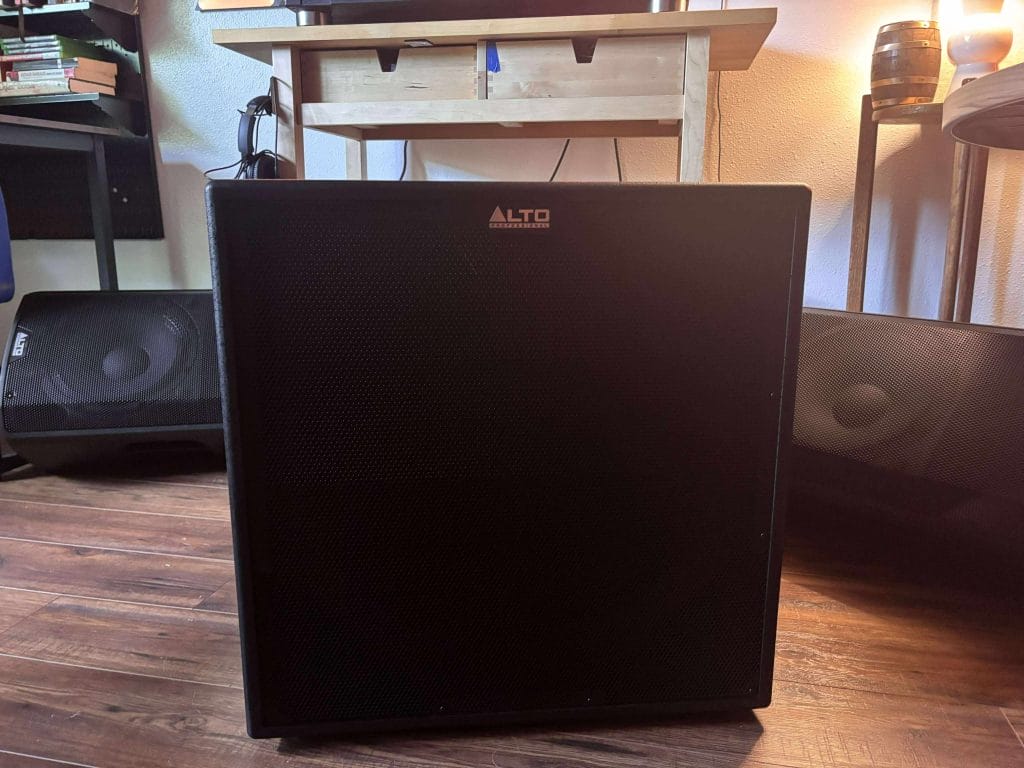
Everything about this unit feels like it was built with the gigging user in mind or at least small spaces where gigs happen a lot. The MDF cabinet is internally braced to reduce resonance, and the splatter-spray finish helps cover up the kind of scuffs that happen when gear gets hauled in and out of cars and corners. The full-metal grille is sturdy, but it doesn’t choke the airflow like some overly tight mesh designs.
It’s not built like a tank, and it’s not pretending to be. But it’s more durable than most subwoofers in its price bracket. If you’re a weekend DJ doing local events or running a rehearsal space where gear sees regular, casual use, this thing will hold up. If you’re running multi-act setups four nights a week, you’ll probably want to be more intentional with transport and storage. That doesn’t make it a flaw—it’s just not pretending to be a tour-grade piece of hardware.
That kind of honesty in the build carries over to the rest of the TX4 Series. The TX412 speakers operate on the same principle—reliable components, no unnecessary frills, and a sound profile that plays well in a lot of different spaces. Everything in the series is tuned in the U.S., which doesn’t automatically make it superior, but does suggest you’re getting a more unified performance when you mix and match these within the same setup. It’s the kind of consistency that simplifies troubleshooting and makes your rig easier to manage over time.
Use Cases and Application Context
The TX12S is clearly optimized for small-to-mid-size use cases. If you’re a mobile DJ, a live musician playing club shows, or someone handling installs in spots like cafés, gyms, or event spaces, this thing makes a lot of sense. It doesn’t need a rack of gear to support it, and it doesn’t demand much from the user to sound good. You set it, tweak a few switches, and you’re off. And if you’re someone who values simple, predictable gear-especially in situations where speed and reliability matter more than precision-it fits right in.
That said, it’s important to be realistic about what it’s not. This isn’t the kind of sub that’s going to handle outdoor festival rigs or fill large theaters. If you’re expecting ultra-deep extension or cinematic impact in wide spaces, you’ll probably hit its limits. But if your needs are more local—gear that lives in the back of your car, gets moved a couple times a week, and plays in venues where the acoustics are a mixed bag—it’s kind of ideal.
With a 900-watt power rating and a 49.4-pound weight, it hits a good middle ground. You’re not sacrificing performance just to keep things portable. It’s heavy enough to feel like a real piece of hardware, but light enough that you don’t need help every time you set up. That kind of balance is hard to find, especially at this price point, and that’s where the TX12S holds its ground.
Final Verdict
The Alto TX12S is a workhorse. It doesn’t try to be fancy, and it doesn’t pretend to do more than it can. But what it does offer-clear, powerful low-end extension in a form factor that’s durable, lightweight, and easy to integrate—is exactly what a lot of working performers, small venue owners, and audio techs are actually looking for in day-to-day setups.
It’s about trust which is the real X-factor here. You can throw this in the back of a car, pull it out at a café gig or rehearsal, plug it in, and you’re good. The simplicity is what makes it usable. No firmware updates, no proprietary apps—just straightforward, practical controls that let you adapt it to the room. And it doesn’t pretend to solve problems it can’t. If you’re trying to fill a massive hall or match high-end studio-grade gear, you’re probably shopping in the wrong bracket. But for what it’s made for, it hits the mark.
There’s a reason this type of sub works well for DJs who play every weekend, or for musicians who need their setup to be reliable without babying it. It’s the kind of box you don’t overthink. And that’s rare at this price point. If your needs are grounded in reality—smaller venues, mixed-use spaces, modest budgets—the TX12S checks a lot of boxes without drawing attention to itself.


